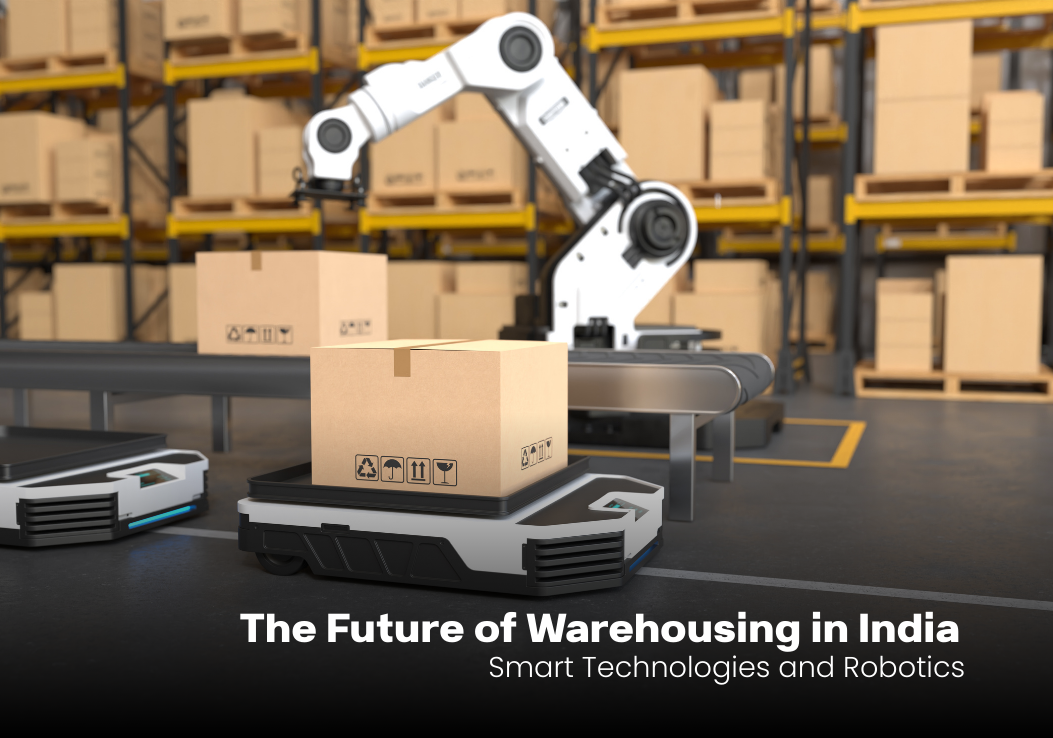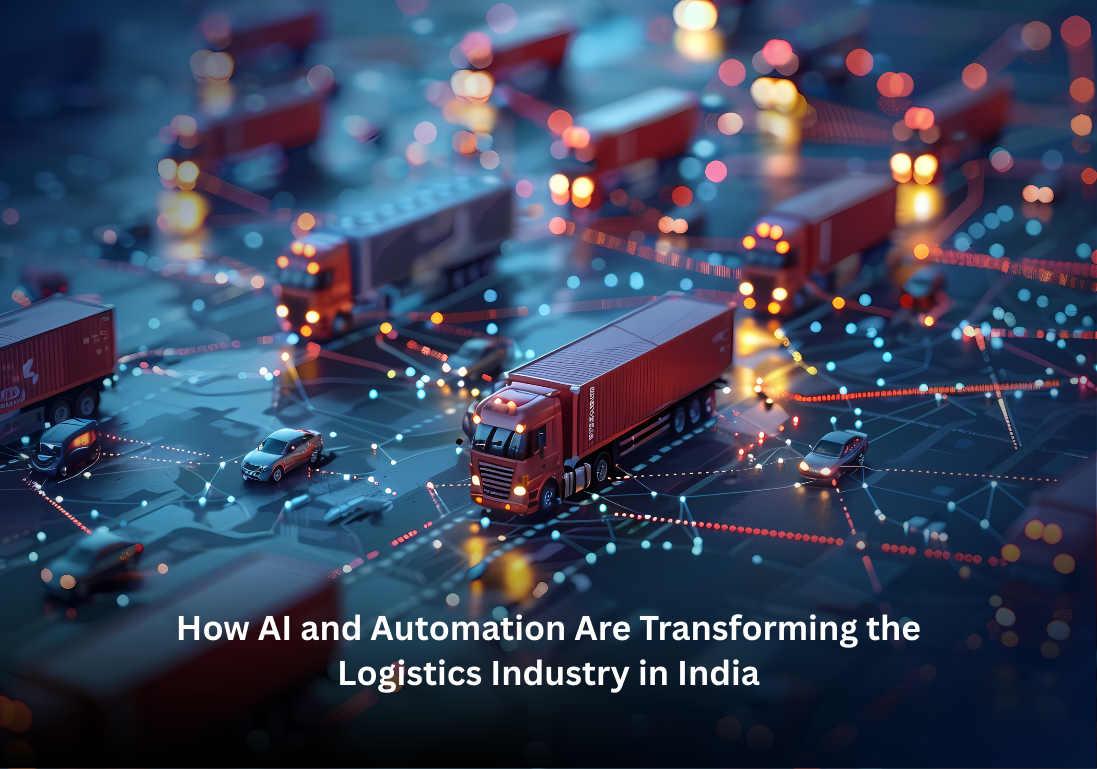Introduction—The Changing Face of Warehousing in India
India’s warehouse business is changing fast and becoming crucial to the economy. Online shopping is a major reason, but the need from factories and smart government ideas like the National Logistics Policy 2022 are also pushing things forward. As per JLL India, premium quality warehouse space, defined as Grade-A, is projected to exceed 500 million square feet by the year 2026. This represents a significant opportunity for expansion!
The future belongs to smart tech, robots, and automation, and they are totally transforming how supply chains work by making them faster, more accurate, and way more eco-friendly.
Drivers of Smart Warehousing in India
- E-commerce surge: Delivery speed is now a competitive advantage.
- Industry 4.0 adoption: Robotics, AI, and IoT enable streamlined logistics.
- Policy impact: GST reforms and new logistics parks encourage large, centralized hubs.
- Customer expectations: Real-time visibility and zero-error order fulfillment.
Robotics and AI Transforming Warehouse Operations
Robotics is moving beyond pilots into mainstream warehousing in India.
- Automated Guided Vehicles (AGVs): Replace forklifts and transport goods seamlessly.
- Robotic arms: Speed up picking, sorting, and packing.
- Drones: Assist in stock verification and surveillance.
- AI in WMS: Predicts demand patterns and optimizes layouts.
For example, Indian robotics firms like GreyOrange and Addverb have deployed large-scale automation for e-commerce giants, cutting processing time significantly.
IoT, 5G and Connected Warehouses
5G is the fifth generation of cellular technology, designed to deliver higher multi-Gbps peak data speeds, ultra-low latency, and massive network capacity. It isn’t just a linear progression from 4G; it’s a revolutionary leap in network capabilities. As of early 2025, 5G connections have reached over 2.25 billion worldwide, demonstrating its rapid adoption.
The rollout of 5G will accelerate digital adoption:
- IoT sensors track inventory, monitor temperature, and cut waste.
- RFID + Cloud WMS provide real-time inventory control.
- Predictive analytics reduce human errors and improve demand forecasting.
This level of connectivity is turning warehouses into data-driven hubs.
Sustainability and Green Warehousing
Sustainability is no longer just a buzzword; it’s a key differentiator in the logistics and supply chain industry. Companies are adopting eco-friendly practices not only to reduce their environmental impact but also to gain a competitive edge.
The Rise of Sustainable Warehousing
One of the most significant trends is the integration of renewable energy and natural systems into warehouse design. Solar-powered warehouses are becoming more common, harnessing the sun’s energy to power operations and reduce reliance on fossil fuels. Similarly, natural ventilation systems are gaining high traction, using clever architectural design to maintain a comfortable temperature and airflow without the need for energy-intensive air conditioning. These innovations not only lower utility costs but also create a healthier working environment for employees.
The Role of Automation
Beyond physical infrastructure, technology is playing a crucial role in sustainability. Automation, for instance, is a powerful tool for reducing energy waste. Automated systems can optimize material handling and storage, leading to more efficient use of space and a significant decrease in unnecessary movement and energy consumption compared to traditional, manual handling processes. This precision and efficiency minimize waste and maximize productivity.
The Growing Demand from Global Clients
As environmental awareness grows, so does the demand from global clients for sustainable partners. Many international corporations now prioritize working with businesses that have a demonstrable commitment to green practices. This is why green-certified warehouses are increasingly preferred. Certifications like LEED (Leadership in Energy and Environmental Design) or BREEAM (Building Research Establishment Environmental Assessment Method) provide a verifiable standard of sustainability, assuring clients that a warehouse meets rigorous environmental criteria. This shift in preference makes a green certification a powerful selling point, attracting and retaining high-value clients who are serious about their own environmental goals.
Essentially, sustainability is no longer a niche concept but a core business strategy that drives innovation, enhances efficiency, and builds a stronger, more attractive brand.
Cold Chain and Specialized Automation
As India’s pharma and food industries grow, cold chain automation is crucial owing to the following factors:
- Robotics reduces handling errors in temperature-controlled warehouses.
- Automated monitoring ensures compliance in dairy, seafood, and vaccines.
- Startups and global logistics players are investing heavily in this segment.
Challenges in Adopting Robotics in India
Despite the opportunities, challenges persist:
- High upfront investment limits SME adoption.
- Skill gaps among warehouse workers.
- Infrastructure readiness, especially in non-metro areas.
- Cultural resistance, with reliance on low-cost manual labor.
Outlook for Warehousing 2030 in India
Looking ahead:
- Robotics adoption will become mainstream in metros and Tier-2 hubs.
- Digital twins will simulate entire warehouse operations.
- AI-driven predictive supply chains will minimize waste and errors.
- Sustainable design will be compulsory under ESG targets.
The nation’s big infrastructure projects and the new National Logistics Policy are really going to speed up how we upgrade our systems.
Conclusion
India’s warehouses are about to hit a tech upgrade that’s impossible to ignore. Stuff like robotics, AI, the Internet of Things, and green tech is going to flip the competitiveness game on its head. Those who jump on these tools first will save time, cut costs, and earn customers’ trust way ahead of the pack. The goal is more than automating tasks; it’s about designing smart, tough warehouses that make sure India stays at the center of the world’s supply chain.
FAQs – Warehousing & Robotics in India
- What is the future of warehousing in India?
Indian warehouses will become highly automated, data-driven, and sustainable by 2030. - How is robotics used in warehouses?
Robotics powers automated picking, sorting, AGVs, and drone-based inventory tracking. - Why is smart warehousing important?
It reduces errors, improves speed, and meets rising e-commerce and customer expectations. - What are the barriers to automation in India?
High costs, lack of skilled manpower, and infrastructure challenges.
Will green warehouses matter?
Yes, sustainability is becoming essential for compliance, cost savings, and ESG commitments.


